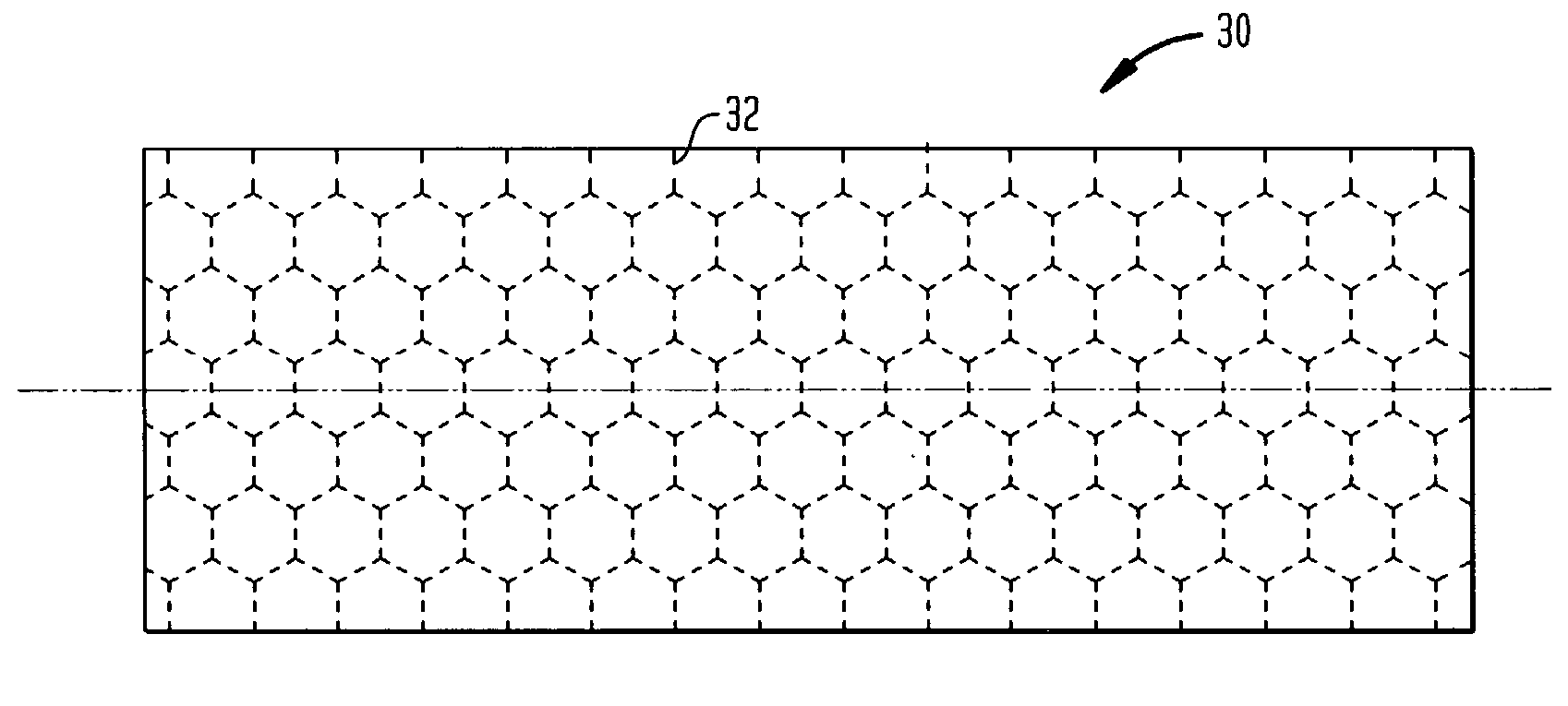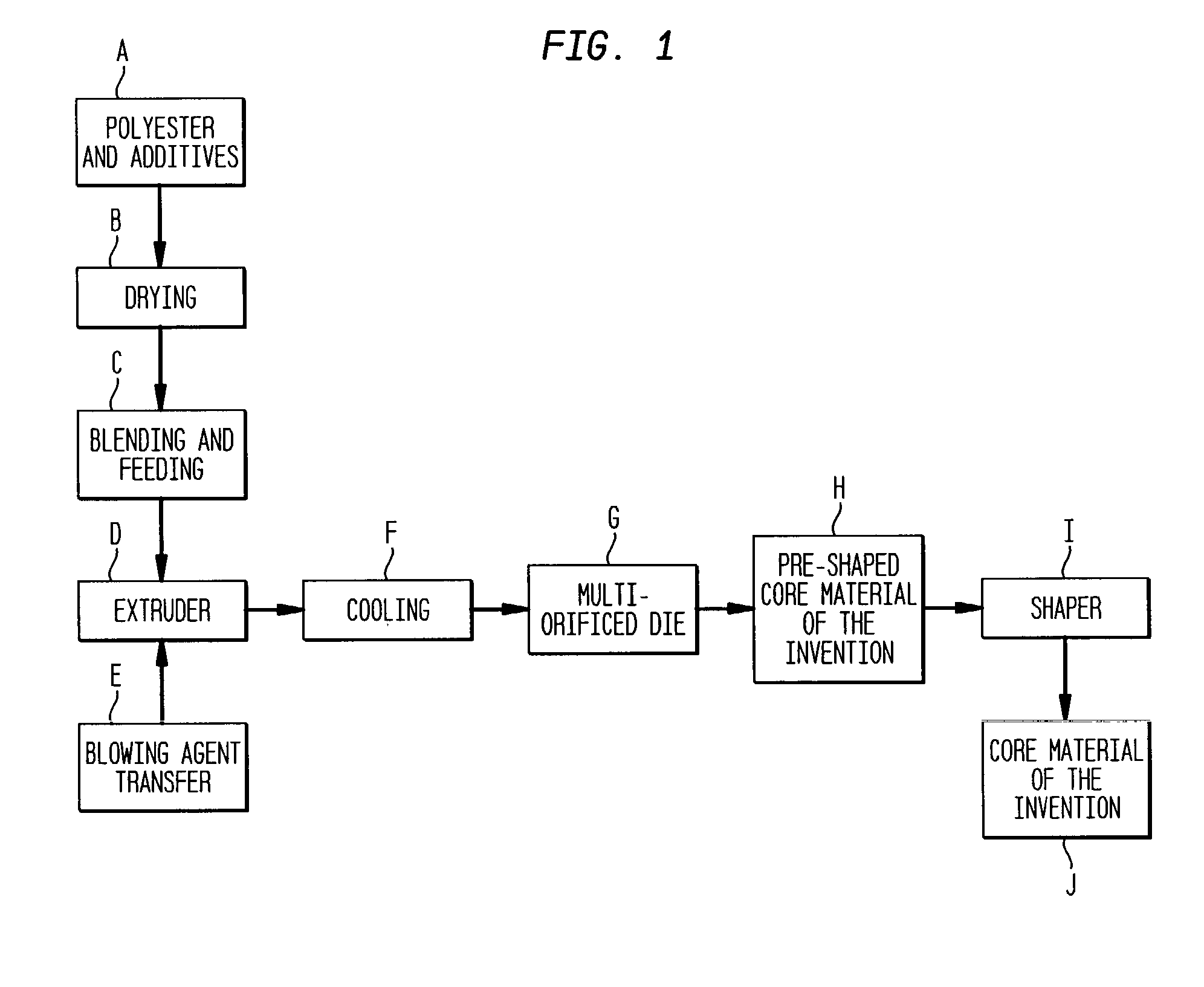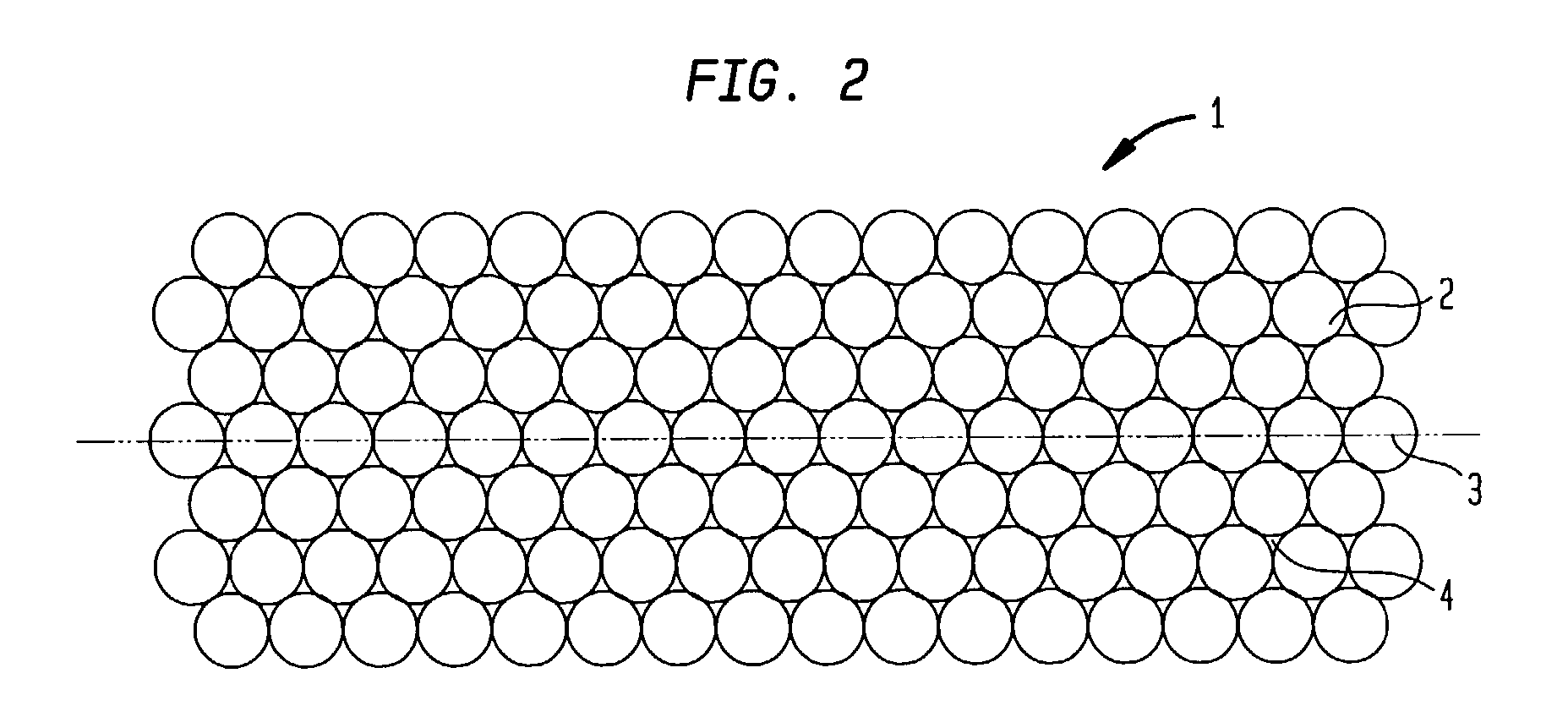Polyester core materials and structural sandwich composites thereof
- Summary
- Abstract
- Description
- Claims
- Application Information
AI Technical Summary
Benefits of technology
Problems solved by technology
Method used
Image
Examples
example 1
6.1 Example 1
[0128] A mixture of polyethylene terephthalate resin (COBIFOAM 0, purchased from M&G Polymers, Patrica, Italy) having an intrinsic viscosity of 1.25 dl / g; and a melting point of 251.degree. C. and nucleating agent was dried for 5 hours at 330.degree. F. (165.degree. C.) by a dehumidified dryer. The mixture was charged into a two-stage extruder having a 2.5" (6.35 cm) single-screw, length to diameter of 44 to 1, with a SMR melt cooler heated to a temperature of 280.degree. C.; and pressurized to 10 Mpa, a polyethylene terephthalate melt. Blowing agent (3 weight percent of the total weight of the melt) was injected by a injection pump and the mixture homogenized in the extruder by mixing section, static mixer and SMR melt cooler to give a foamable gel. The temperature was reduced to 250-255.degree. C. at a pressure of 3.5-5.0 Mpa and the foamable gel was extruded through a rectangular multi-orifice die plate that was fastened on the die body, which the other end of the di...
example 2
6.2 Example 2
[0132] The procedure of Example 1 was followed using 4 weight percent blowing agent and a die plate of 7.0 cm.times.2.0 cm comprising 34 holes each of 0.052 inches (1.32 mm) in diameter. The holes and rows were equally spaced at approximately 0.25 inches (6.35 mm) between the centers. The coalesced multi-stranded pre-shaped core material was shaped as described in Example 1. The resulting core material of the invention had a cross section of 2.75 inches (7.0 cm) by 1.45 inches (3.68 cm); uniform cell size (<0.3mm); no voids between the strands; and a foam density of 4.7 pounds per cubic foot (75 kg / m.sup.3). The core material so produced had the following characteristics:
3 Characteristic Value Density 75 kg / m3 Average cell size 0.2 mm Open-cell content <10%
[0133] 6.3 Example 3
[0134] The procedure of Example 1 was followed, with 0.15 weight percent talc as a nucleating agent and 2 weight percent blowing agent. The resulting core material of the invention had a cross-sect...
example 4
6.4 Example 4
[0135] Using the procedure of Example 1, a foamable gel comprising a mixture of polyethylene terephthalate polyester resin (CRYSTAR 5067, available from Du Pont Polyester) having a melting point of 251.degree. C. and 1.5 weight percent 1,1,1,2-tetrafluoroethane (HFC R134a) as a blowing agent was cooled to a temperature of 255.degree. C. and extruded through the die plate. The SMR melt cooler was not used. The die plate was connected directly to the end of extruder; was 10 cm.times.2.5 cm; and comprised 78 equally spaced circular-shaped holes arranged in five rows. The holes were about 0.065 inches (1.65 mm) in diameter and spaced about 0.25 inches (6.35 mm) between their centers.
[0136] The resulting coalesced multi-stranded pre-shaped core material was conveyed through an aluminum-plate shaper of the invention having a width of 11 cm and a length of 30 cm. The ratio of the opening area to the parallel cross-sectional area was 1.6. The first 2.5 cm range of shaper has a ...
PUM
| Property | Measurement | Unit |
|---|---|---|
| Temperature | aaaaa | aaaaa |
| Temperature | aaaaa | aaaaa |
| Temperature | aaaaa | aaaaa |
Abstract
Description
Claims
Application Information
 Login to View More
Login to View More - R&D
- Intellectual Property
- Life Sciences
- Materials
- Tech Scout
- Unparalleled Data Quality
- Higher Quality Content
- 60% Fewer Hallucinations
Browse by: Latest US Patents, China's latest patents, Technical Efficacy Thesaurus, Application Domain, Technology Topic, Popular Technical Reports.
© 2025 PatSnap. All rights reserved.Legal|Privacy policy|Modern Slavery Act Transparency Statement|Sitemap|About US| Contact US: help@patsnap.com



